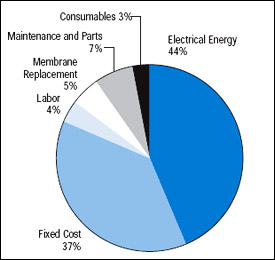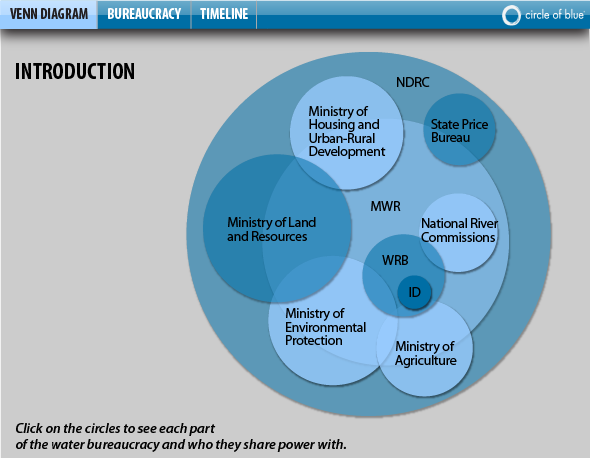China Turns Profit From Coal-to-liquid Fuels Production, May Expand Controversial Program
Though China suspended most of its coal-to-liquid fuels refineries in 2008 due to concerns for scarce water resources and high production costs, recent financial gains may lead it to reconsider its policy.
The state-run China Shenhua Group plans to scale up its coal-to-liquids (CTL) production, after financial reports for the first half of 2011 have shown that the company has made a profit from its demonstration project in Ordos, Inner Mongolia, Reuters reported, citing Shenhua’s general manager.
The plan to expand China’s CTL capacity pours cold water on a 2008 government decision to cancel dozens of CTL projects in the country, amid concerns for high production costs and the strain on scarce water resources.
The $US 4 billion Shenhua refinery — once seen as the vanguard of the world’s largest program for converting coal to new products, such as chemicals, fertilizers, and fuel — produced about 470,000 metric tons (520,000 tons) of oil products from coal during the first six months of 2011 and brought in $US 125 million (RMB 800 million) in earnings before taxes. At less than $US 60 per barrel to produce, the facility is, in fact, making good money in the global oil market, where crude prices have remained above $US 100 per barrel since February.
The profits have boosted confidence in China’s CTL program, designed to use the nation’s mammoth coal reserves to produce diesel fuel and to ease growing dependence on overseas crude oil.
Zhang Yuzhuo, Shenhua Group’s general manager, told Reuters last week that the company has plans to increase the Ordos facility’s first phase of fuel-production capacity from 1.8 million to 3 million metric tons (2 million to 3.3 million tons) per year and to 5 million metric tons (5.5 million tons) per year after the second phase is completed.
Shenhua also plans to begin construction later this year on a project in northwestern Xinjiang that will produce 3 million metric tons per year.
CTL Program Faces Uncertain Future
But, in a surprising move on Monday, the South African petrochemical firm Sasol quit joint-venture plans to build a $US 10 billion coal-liquefaction facility with the Shenhua Group, Business Week reported. The facility was slated for the Ningxia Hui Autonomous Region, but, when the regulatory approval for the project stalled, Sasol decided to pursue options elsewhere.
“Given the delay in the approval from the Chinese government for our CTL project in China, we are developing other investment strategies and growth opportunities, both in South Africa and abroad,” Nothemba Noruwana, group media manager at Sasol, told Circle of Blue in an e-mailed statement. “We have reallocated planned project funding for the China CTL project and redeployed staff to other projects.”
Though China’s Ministry of Environmental Protection granted initial environmental approval to the Shenhua-Sasol project in March of this year, the two companies have not received any decision from the Chinese government since they submitted an application report in December 2009, according to David Constable, the chief executive officer of Sasol.
China, it seems, is still up in the air about how to use the nation’s enormous reserves of coal. After approving the Ordos facility in 2003, the central government’s energy and economic development agencies approved plans to build 22 additional coal-to-liquid fuel plants — most located near the largest coal reserves, in the dry northern and western provinces.
But, in September 2008, the government announced it was suspending the coal-to-liquids construction program, amid concerns over high costs and the impact on scare water resources, since it takes 10 to 12 cubic meters (2,641 to 3,170 gallons) of water to produce a metric ton (6.3 barrels) of fuel. Shenhua’s water-guzzling Ordos plant, for example, consumes 10 million cubic meters (2.64 billion gallons) of water annually in a dry region, where competition is already fierce between agriculture, the coal industry, and northern China’s growing cities.
Read more about China’s coal-conversion programs in Circle of Blue’s article, Water Needs Curtail China’s Coal Gasification For Fuel, Yet Conversion To Chemicals Pushes Ahead, by senior editor Keith Schneider.
Source: Business Week, Reuters
, a Bulgaria native, is a Chicago-based reporter for Circle of Blue. She co-writes The Stream, a daily digest of international water news trends.
Interests: Europe, China, Environmental Policy, International Security.









Leave a Reply
Want to join the discussion?Feel free to contribute!